Angola Revisited
A second look at one of America’s most notorious prisons.
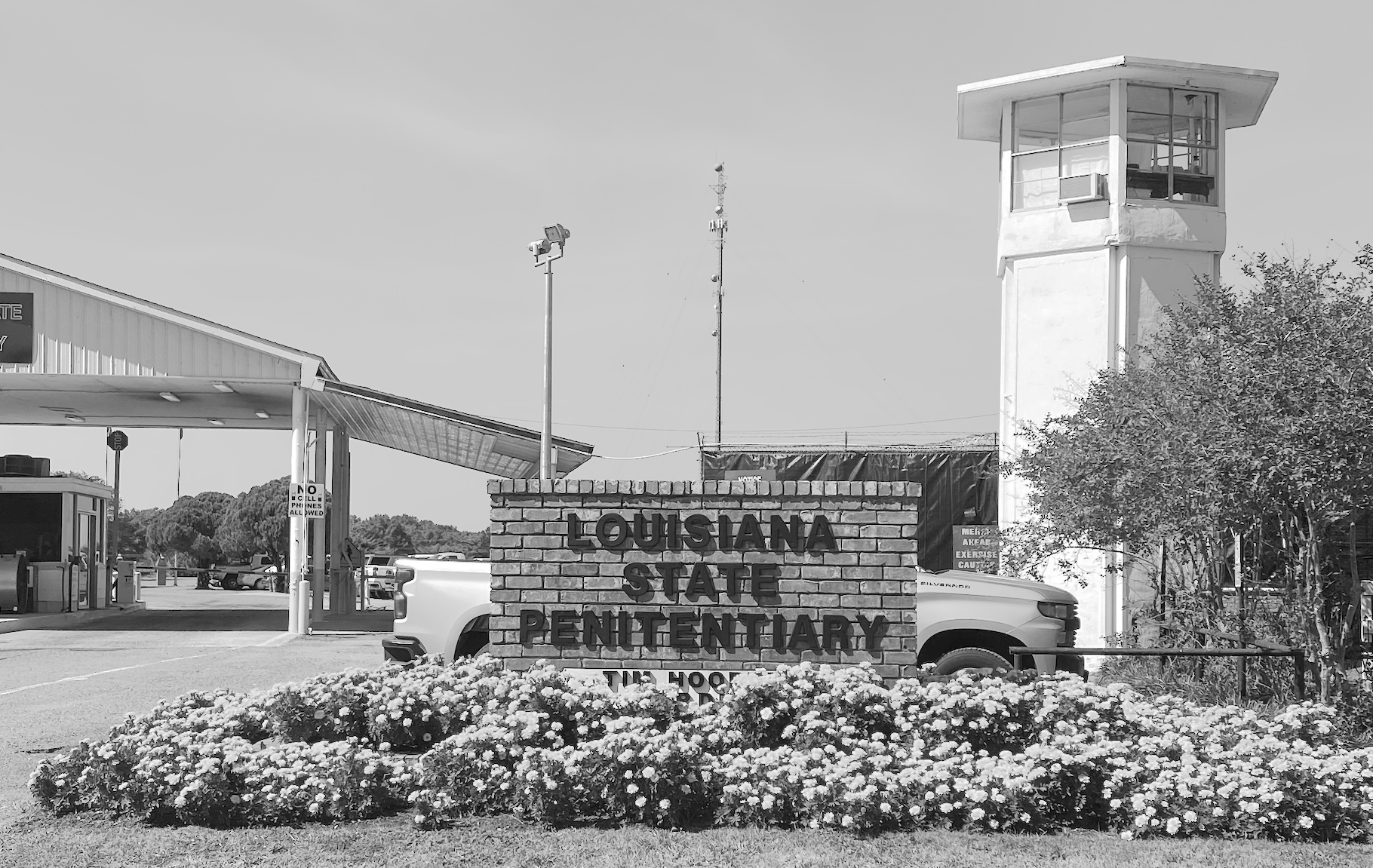
There is a lot a prison warden can stage for a reporter. He can trot out model inmates and pretend they’re representative of the prison as a whole. He can keep the reporter away from the worst parts of the facility. He can tell staff to scrub down the camps and be on their best behavior.
He can’t stage an unannounced visit to death row.
Warden Tim Hooper walked me through a series of chain-link fences that led to the death unit at Louisiana State Penitentiary.
“I got some bad dudes in here,” he said.
Hooper, a wiry man with a thick bayou drawl, has decades of experience in Louisiana’s penal system. He was well-liked by staff and inmates I spoke to. One former security officer endearingly called him “a grunt.”
When Hooper opened the front door, it almost looked like a nursing home. The walls were painted a soft pastel. A plexiglass case by the door held pictures of inmates playing checkers, bingo, and basketball. A woman in scrubs sat behind a flower-topped desk and greeted us as we entered. She sent us through a side door and onto the unit.
Death row itself was less inviting. The walls were white cinderblock with a dull slate trim. The unit was structured as a panopticon, with a series of cell blocks radiating from a central guard station for maximum visibility.
Sixty inmates spend the decades-long purgatory between verdict and execution on these cell blocks. Non-capital inmates who murdered other inmates or penitentiary staff are housed here, too.
Hooper beckoned me down one of the cell blocks. On the outside was a large plaque: DEATH ROW BASKETBALL CHAMPIONS. It had Hooper’s name on it. The condemned men of “Tier H” had apparently taken home the most recent victory.

(Photo courtesy of the author)
When we entered the cell block, I was surprised to see every cell wide open. One guard stood silently in the corner, and the whole block was perfectly quiet. Some inmates sat at the edge of their cells, reading books or looking at internet-restricted JPay tablets. Others laid in bed, and some fraternized by a window. They had apparently just come back from lunch.
According to Hooper, they were free to come and go from their cells as they pleased.
“It used to be back, years ago, we let ’em come out for one hour, take a shower, you exercise, and then back in your cell. You had to do your phone calls, shower, everything, your exercise in that hour,” he said. “Now, we’re gettin’ them out a minimum of two hours a day. Some of them stay out all day long.”
The inmates politely nodded as we passed their cells. A heavyset black inmate called out to Hooper in a booming voice.
“Hey, how y’all doin’?” he asked. He dapped up the warden with a smile. Several other inmates followed suit. It was a remarkable greeting for a man who would eventually serve as their executioner.
Hooper’s signature initiative is getting the inmates, even the death row inmates, outside of their cells and dormitories. Instead of sitting indoors for hours on end as is commonplace in more urban penal environments, Hooper allows even death row inmates to roam about the compound with relative freedom from 7 in the morning until 9 at night.
Death row staff feared that the policy would increase violence and disorder among the inmates, but the opposite has happened. Inmates responded well to their newfound freedoms, and disciplinary problems in the death unit dropped substantially after the policy was implemented.
“They don’t wanna mess up anything they got, because now they can go to visit without being in iron restraints, and now they can have contact visits, and now they can go to the school. They can do everything as a group, where before, you couldn’t,” Hooper said.
The death row inmates I met were polite and in good spirits, all things considered. One of them laughed about a recent “shindig” thrown for death inmates by Hooper and corrections staff. The warden evidently thought them trustworthy enough that he let me walk past their open cells unguarded and unannounced.
“They’re human beings,” Hooper said. “You act like a human being, we’re going to treat you like a human being.”
Louisiana State Penitentiary, nicknamed “Angola'' after the former plantation on which it’s located, is one of America’s most notorious prisons. The penitentiary houses some of Louisiana’s most violent offenders, with more than 3,600 of its 4,680 inmates serving life sentences for crimes such as rape and murder. Its reputation as the “Alcatraz of the South” emerged from a long history of violence that had defined Louisiana's penal system from its earliest days.
Before the state opened its first penitentiary in 1835, Louisiana had housed its prisoners in a small jail in New Orleans, where Alexis de Tocqueville saw “men thrown in pell-mell with swine, in the midst of excrement and filth” and “chained like wild beasts.” The penitentiary that Louisiana built to replace it was designed as an institution where criminals could atone for their sins with hard labor, contemplation, and prayer.
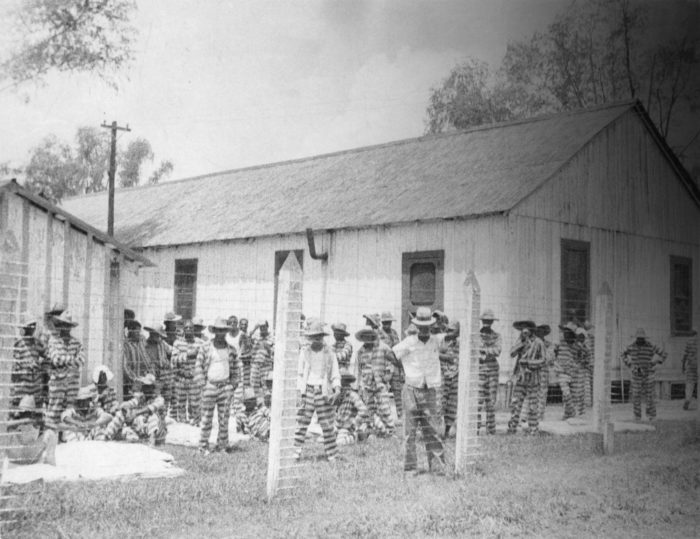
(Photo by Alan Lomax/Library of Congress/Corbis/VCG via Getty Images)
But that first penitentiary was mired in abuse. The state had delegated the operation of the institution to a group of financiers who worked inmates for profit on and off prison grounds. According to Mark T. Carleton’s book Politics and Punishment on the history of the Louisiana penal system, a state senator in 1852 claimed that inmates were being treated “like slave[s]” by imperious lessees.
Major Samuel James, the lessee who oversaw the state’s prison system from 1870 to 1901, bought the Angola plantation in 1880. That land became today’s Louisiana State Penitentiary, and was set up as a prison farm, with makeshift cells in the plantation’s abandoned slave quarters.
Deplorable conditions prevailed on the plantation and on James’s network of chain gangs. An 1886 report from the East Feliciana Patriot-Democrat captured the backlash against James’s handling of the prisoners:
men on the [James] works are brutally treated and everybody knows it. They are worked, mostly in the swamps and plantations, from daylight to dark. Corporeal [sic] punishment is inflicted on the slightest provocation…. Anyone who has travelled along the lines of railroads that run through Louisiana’s swamps…in which the levees are built, has seen these poor devils almost to their waists, delving in the black and noxious mud…. Theirs is a grievous lot a thousand times more grievous than the law ever contemplated they should endure in expiation for their sins.
These reports, and complaints about convict labor undercutting free men’s wages, prompted Louisiana legislators to pass a constitutional amendment banning convict leasing in 1898. It took effect when James’s lease ended in 1901, and conditions at the penitentiary quickly improved. A 1906 report found inmates “well housed, well fed and well cared for,” and some of the worst practices of the James era mercifully retired.
Abuse at Angola nevertheless persisted in the decades that followed. To save money, the penitentiary started using inmates as guards in 1917. Those “convict-guards” regularly beat and harassed their subordinates, as a 1944 report by a Louisiana government delegation found guards flogging inmates at a scale just “short of rank torture.”
Staff abuse and the generally squalid conditions of the prison farm led a group of 31 Angola inmates in 1951 to slash their Achilles tendons in protest. The “Heel String Gang” prompted Governor Earl Long to send an investigative committee to the prison and legislators to allocate millions of dollars for the construction of new housing facilities.
Those reforms led to some immediate improvements in inmate welfare, but violence and sexual abuse remained a feature of penitentiary life into the 1970s. A court-appointed monitor recorded 350 “serious” stabbings at Angola between 1972 and 1975. Inmate Wilbert Rideau estimated that a quarter of men at Angola in the 1970s were in bondage to other inmates. Former prison nurse Mary Margaret Daugherty at the time called the penitentiary a “sewer of degradation” in which “sex offenders, stool pigeons, homosexuals, degenerates of every type, and psychopaths and neurotics are huddled in bedside companionship.”
Out of this long history of abuse, however, emerged an impressive line of reform-minded wardens. The first was C. Murray Henderson, a sociologist who had worked with the criminally insane at Tennessee’s Central State Hospital. He took over as warden of Angola in March 1968, and was recognized by the state legislature for “his belief in the individual worth of man and his innate ability to change, always with a view toward the rehabilitation of the inmate so that he may become a useful and productive member of society.” Henderson supported the inmate rodeo, an event that had started three years earlier and allowed the inmates to have an annual brush with the outside world.
His successor, C. Paul Phelps, continued the rodeo, and allowed inmates to operate an uncensored newspaper, The Angolite. He made himself available to inmates to hear their petitions and complaints. Rideau described Phelps as “perhaps the most accessible correctional administrator in America.”
Henderson and Phelps both made Angola safer, as violence declined and many abusive staff members were fired. But the inmate population still faced life sentences with little prospect of a meaningful life on grounds. “Now you got better living conditions, don’t work as hard and got no corporal punishment,” inmate Wallace McDonald said in 1975, “but you ain’t got no hope.”
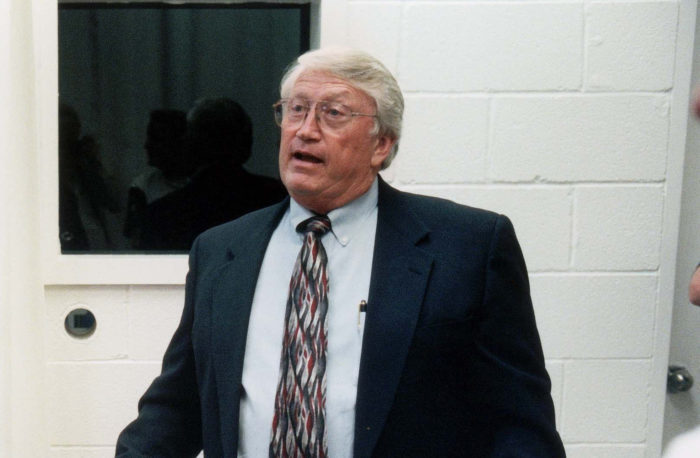
(Photo by Diana Walker/Getty Images)
Burl Cain, who took over as warden in 1995, was “the catalyst that got this place turned around,” according to Louisiana corrections secretary James LeBlanc. Cain returned the penitentiary to its founding purpose as a place of penance and spiritual rebirth, emphasizing the role of religion in sustaining men who faced a lifetime behind bars. He built a chapel in every inmate camp and brought the New Orleans Baptist Theological Seminary on grounds.
Cain shifted the culture at Angola by giving the inmates greater freedoms, with the expectation that they would police themselves and hold one another accountable for fear of losing their privileges. He allowed inmates to have outdoor visits with family members at a park on the penitentiary grounds, sent trusted inmates unshackled and in street clothes to local churches for Sunday services, and permitted select inmates at the rodeo to have unmonitored access to their families and friends.
“We want our inmates to value their everyday lives enough to want to stop someone from upsetting everything by an act that’s criminal or violates the rules,” Cain said.
Tim Hooper took over in 2016, and his emphasis on getting inmates outside for recreation and programming mirrors Cain’s philosophy.
“It gives them morale and it gives them hope, you know? It makes life on the correctional officers easier, because they’re not wanting to fight us no more. They’re not wanting to throw substances on the corrections officers. They’re more willing to say, ‘Hey, I have a problem, let’s talk about it,’” he said.
Violence at Angola has declined. Inmates used to sleep with magazines stacked on their chests to protect against late-night stabbings. Today, one inmate told me that he “can go to sleep peacefully around here.” But the penitentiary is still criticized by journalists and criminal justice reform advocates on the grounds that the racial makeup of the prison, its agricultural program, and its setting on a former plantation are evocative of slavery. Jules Bentley of Vice called Angola a “broke-ass modern-day version of the plantation life,” with “Michelob instead of juleps, golf carts instead of four-horse carriages, and little brick one-stories instead of pillared manses.” It’s a criticism that Angola’s administrators resent.
Louisiana State Penitentiary is set on nearly 18,000 acres of Louisiana farmland. From a distance, it looks more like a quaint Southern village than a maximum-security prison.
In contrast to the spartan character of many modern correctional institutions, Angola’s inmates have access to an expansive physical plant and outdoor recreational activities. Here, inmates ride bicycles, walk dogs, and play football on grounds larger than the city of Manhattan. At Chicago’s Metropolitan Correctional Center, nearly 700 inmates share a 28-story building with a single rooftop exercise yard.
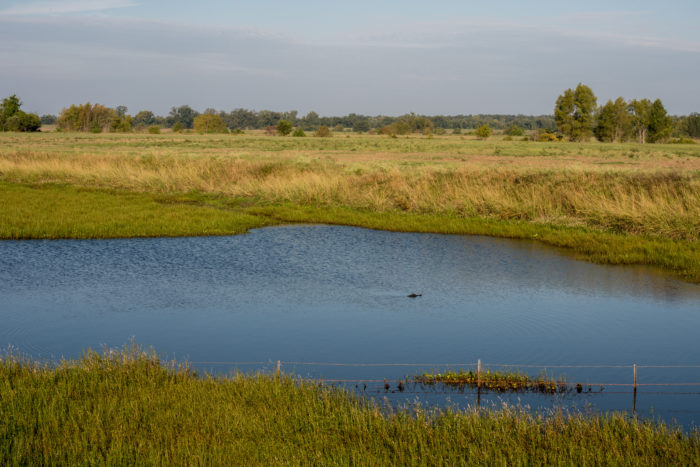
The only way for outsiders to reach Angola is via a winding 26-mile road that leads to the penitentiary’s front gate. I arrived early in the morning and was greeted by Angola staff, who sat me in the back of a truck and drove me through the front gate after a weapons search.
As we rolled along a dirt road, we passed inmates working in soybean fields, riding combines and tractors, and watering trees and shrubbery around the grounds.
We pulled into Main Prison, the largest inmate camp at Angola. As we rolled through the chain-link gates, we passed inmates riding bicycles and Gators, some of whom waved at the wardens as our truck drove by.
Main Prison is the site of the reentry program, a diversion initiative started in 2010 by a Louisiana judge and former warden Burl Cain, that allows select first-time felony defendants to have their sentences deferred if they complete a two-year vocational program at Angola. The reentry defendants can earn certificates as HVAC technicians, electricians, masons, welders, carpenters, and more, in classes taught by qualified lifers at Angola. If reentry inmates fail to obtain a vocational certificate, or have repeated disciplinary issues within the program, they’re forced to serve their full felony sentence, which can run upwards of 30 years. If they succeed, the inmates are resentenced to simple probation.
I met John Sheehan, who runs the automotive reentry program at Angola. A portly man with round glasses, Sheehan was sentenced to life in 1988 for murdering his wife. He takes pride in the know-how he’s imparted to the younger inmates and is grateful for the chance to impact the lives of men who are getting a second chance.
“You're making a person a better husband, a better father, a better citizen, because now he's a taxpaying citizen, instead of taking away,” he said.
The program provides meaning to Sheehan who, when he came to the penitentiary in 1988, “didn’t know how to change a spark plug.” He now oversees six schools within Angola’s automotive program, which has built such a reputation among locals that the East Feliciana Sheriff’s Department and Angola correctional staff have Sheehan and his crew fix their cars.
The inmates who participate in this program, both lifers who have had their sentences commuted by the state pardon board and reentry inmates who complete their automotive certificate, are in high demand throughout the industry. Eric Lane, president of Gerry Lane Enterprises’ network of car dealerships, told me that he has hired several former Angola inmates and counts them as some of his best employees.
“I’ve got five people in my Chevrolet store right now who are top producers in my company,” Lane said. “Not only are they trustworthy, they’re producing better than anybody else I’ve got, just about.”
Part of the success of the reentry program, which has a five-year recidivism rate of about 14 percent, well below the state average of 41 percent, comes from the vocational and social mentors assigned to each of reentry inmates. Trusted lifers at Angola are assigned to the young inmates to make sure they break the habits that brought them to prison. That Angola trusts its lifer inmates with this responsibility, and that judges believe the presence of these inmates will be conducive to the reentry program’s success, speaks to the culture of moral improvement at the penitentiary.
I spoke to Tommy Franklin and Justin Singleton, two men sentenced to life for murder, who respectively serve as social and vocational mentors in the reentry program. They both served ten years at Angola without major disciplinary infractions before being promoted to trustee status, which, in addition to providing them mentoring opportunities like those at the reentry program, gives them greater freedom of movement across Angola’s 18,000 acres.
Their roles as mentors involve speaking with the reentry inmates about the patterns of behavior that led to those inmates’ offenses, and counseling them on how to change their habits to succeed as workers, husbands, and fathers on the outside.
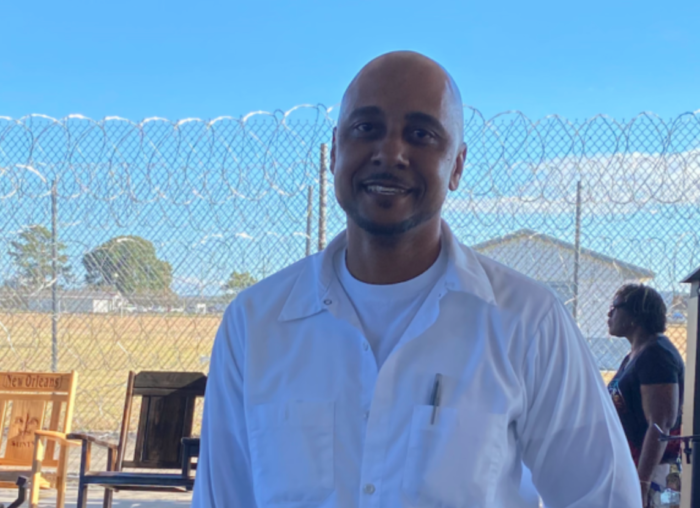
(Photo courtesy of the author)
“We contribute in teaching classes and facilitating and doing all these different things so the men in our community can learn how to be better fathers and be better husbands,” Singleton said. “And one thing I've learned—I have a daughter, she's 21—and one of the greatest lessons that she's ever taught me is that prison does not disqualify me as her father. She still expects me to be her dad, regardless of my geographical location. And for me, I felt that prison disqualified me, but she reminded me that it didn't. And so, it's for us to take those same lessons and let those other guys know that, listen, you are not disqualified to be the very best you that you can be.”
Franklin agreed, noting the harm his crime had inflicted not only to the victim but to the victim’s family, friends, and broader community, as well as his own family.
“Every man in this prison represents a household. So all these men in prison got a household in disarray; they missin’ their head,” he said. “So it’s up to us to come back in there and give back to it.”
I was conscious of the fact that these men are considered “model inmates”; Hooper himself admitted that there were some prisoners who were simply too dangerous for me to see. “Some of ’em will kill you in a heartbeat. They will kill me.” But Franklin and Singleton were nevertheless products of Angola, men convicted of terrible crimes who, given years to contemplate their sins and atone, at least gave the appearance of having been reformed.
I wanted to know whether Franklin and Singleton had internalized the ramifications of their crimes, which I thought would be a better measure of their rehabilitation than their ability to administer part of the reentry program. I asked them both what they would say to someone who said they never deserve to see the outside of a cell again given the nature of their crimes.
“I will never minimize somebody who has that thought—that because I've committed that crime, I shouldn't be released. That's their belief and I never will go against that,” Franklin said. “Like [Singleton] said, I'm going to do the best I can in here to contribute to society, in here or outside. But for me to try to go against somebody’s belief—because what I did was horrible. I pretty much destroyed a family, a community, and everything. And I would never try to minimize that, at all. But what I would do is try to add value when I can, wherever I can.”
Singleton said that while he would not want to “minimize” the “tragedy” associated with his crimes, he and other inmates want “to be the best version of ourselves that we can be,” which he said requires taking the time to overcome the demons that led them to Angola.
“We know that you can be a grape, and be good for a season, or you can go through the process, which probably doesn’t feel that good, to become wine, and be good for a lifetime. And so we’re focused on becoming better. We’re not focused on staying where sometimes people will put you, and say, ‘This is who you are, this is what you’ve done,’ because we understand that we don’t have to be defined by the worst thing we’ve ever done. But, we’re not defined by the best thing we’ve ever done. Our lives are a kind of a collection of everything that we’ve done.”
That process of reform, Singleton told me, would not be possible without the support of penitentiary administrators, who “for the most part … have the right agenda.” And while getting an authentic account of day-to-day inmate-to-staff relationships would have been impossible without spending weeks at the prison with more unfettered access than I was granted, every inmate I spoke to had good things to say about Warden Hooper and the staff at Angola.
Luther, who runs the penitentiary’s welding program, told me that he views some of the staff as extensions of his family, given that, as a boy, his mother had died and his father was incarcerated. Luther is the only inmate in the country industry-certified as a welding instructor, and he completed his certification exam in part because a staff member was willing to drive him to a computer lab off the prison grounds. He described “Mr. Easley,” the Angola staff member who took him to take the test, as something of a father figure.
“I have to be honest with you, I am forever thankful. My dad wasn’t there for me. Mr. Easley—and this one time here, it changed my life—I was taking this test. [Easley] could have been anywhere in the world, anywhere in the world. This man rode with me all the way up there in his personal car. When I sat down to take the test, I was behind him, and he gave me a thumbs up,” he said. “I never had that kind of support.”
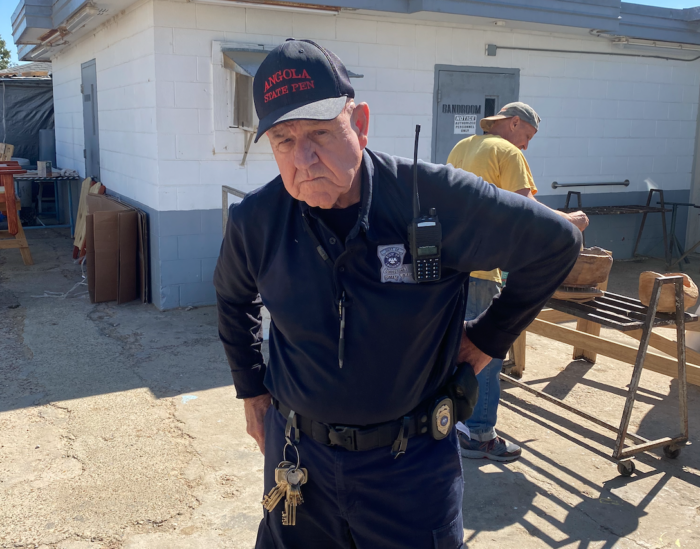
(Photo courtesy of the author)
The paternal style was familiar to Jule Newman, a correctional officer at Angola in his late 70s, who called the inmates “my boys.” Newman, a Southerner through-and-through with a wrinkled face, stone countenance, and Mississippi twang, served as a security officer at Camp F, Angola’s “trustee” camp for inmates who have served at least ten years with limited disciplinary infractions. He told me that if he fell, the inmates at Camp F would run to his aid “before any free person would.” His job, he said, is not only to be a custodian, but a caretaker.
“Best way to explain it, a lot of people think we’re here to guard ’em, keep ’em in here, and dog ’em out all the time. That’s not it. I have a job to see that we count, to see that they stay here. But also part of my job is to take care of ’em, and see to ’em,” he said.
It was a little soft—more therapeutic than I’d have expected from a grizzled Southern cop. But Newman saw the humanity in men who committed unthinkable crimes.
“Thirty seconds, two minutes in their past, they made a bad mistake,” he said. “And they’re payin’ for it.”
The Angola Prison Rodeo is the most well-known feature of life at Louisiana State Penitentiary. Hosted once in the spring and every Sunday in October, the rodeo represents an annual opportunity for the men of Angola to interact with the public. The event is ticket-only, and most weekends draw upwards of 10,000 people.
Select inmates who have served at least ten years of their sentence and have avoided disciplinary infractions are allowed to roam freely throughout the stadium and the nearby concessions area. They can spend unguarded time with their families, interact with members of the public, and sell their merchandise at the hobbycraft market, an open-air bazaar where inmates sell paintings, woodworking projects, and leather goods. Hooper told me that the hobbycraft market brings in an average of about $220,000 per weekend.
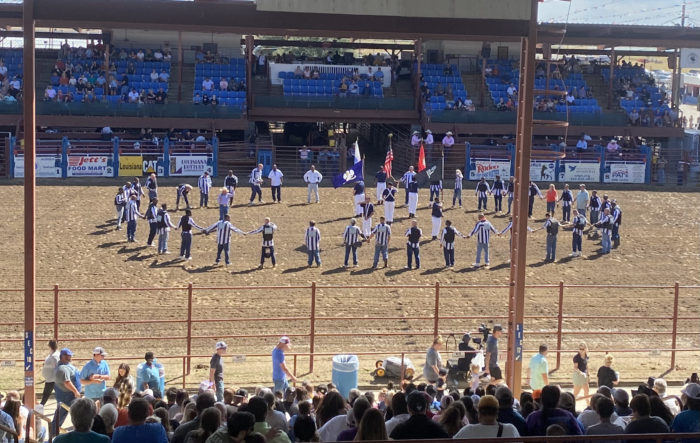
(Photo courtesy of the author)
I met Patrick Glendon, serving a life sentence for murder, three days before a Sunday rodeo. Glendon was working in the woodshop on rocking chairs and other projects to sell at the hobbycraft market. He told me the rodeo gives him and the other inmates something to look forward to all year.
“We’re blessed with it, because you’ve got guys doin’ hard time just like we’re doin’ and they don’t have the opportunity—you know, I got a brother right there at Parchman [Penitentiary in Mississippi], you know, he don’t get the opportunity to do nothin’ like this.”
Justin Singleton was selling hand-crafted smokers and grills outside the stadium on the day of the rodeo, and agreed that the event gives lifers at Angola something to hope for.
“Just the idea that there’s an administration that trusts us enough that allows us to be in an environment and an atmosphere where there’s other people who are not in our situation. It’s not happening anywhere [else]. It’s just not taking place. So it provides hope in a lot of different ways. One, if I want to be here, then I have to do the right thing, right, so if I hope to be here, then it encourages me to make good decisions. And two, I’m out here, this is actually motivation to me to want even more to be where they are some day… A lot of the guys who were here now come back every Sunday, which gives me more hope.”
The rodeo itself takes place in an inmate-constructed stadium that looks from the outside like a 1950s racetrack. Inmates have to be write-up free for two years to be eligible to participate, and there is a lengthy waiting list to ride a bull or otherwise partake in the rodeo.
The event began with a prayer led by a local Protestant minister. The inmate participants linked arms at the center of the stadium, as the minister thanked God “for the freedoms that we enjoy” and “the freedoms that are in this country.” An inmate sang the Star Spangled Banner, and the warden rode around the track in a horse-drawn carriage to signal the start of the rodeo.
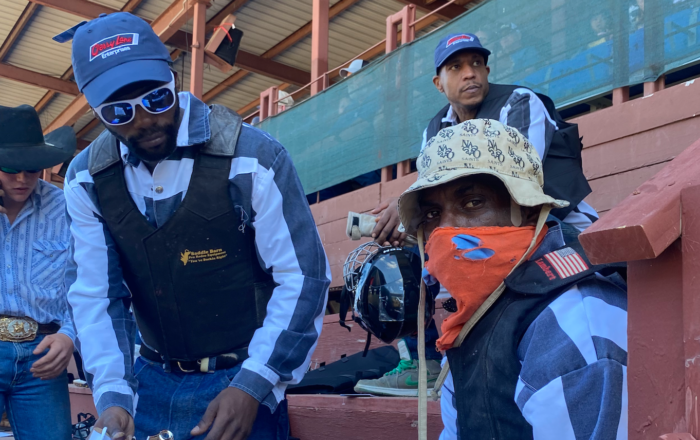
(Photo courtesy of the author)
Inmates then took part in a range of events that one almost could not believe were legal. They rode bulls and bucking broncos for cash awards. They played “Inmate Poker,” where inmates sat around a plastic table beside a charging bull and the last man sitting won a modest stipend. A group of 50 inmates played “Guts and Glory,” with $500 for whichever inmate successfully dislodged a poker chip tied to the head of a bull.
At the conclusion of each event, the crowd of locals, inmate family members, and out-of-town spectators roared with applause. The inmates pumped their fists, clapped their hands, and pointed to the crowd, drinking in the praise.
To those who criticize the administration for giving inmates who have raped, tortured, and killed other human beings a day in the sun, Corrections secretary James LeBlanc noted that all of the men at Angola—the ones in the rodeo, or enjoying freedoms on grounds—are still ultimately prisoners.
“They’re doing time for what they’ve done,” he said. “It doesn’t mean you gotta punish them with other things while they’re here, you know?”
Most of the thousands of lifers at Louisiana State Penitentiary will grow old, get sick, and die here. Inmates at Angola staff a hospice unit for other inmates, performing daily care as elderly inmates face the end of their lives. If their families don’t claim their bodies, the inmates will be buried in one of the penitentiary’s two cemeteries.
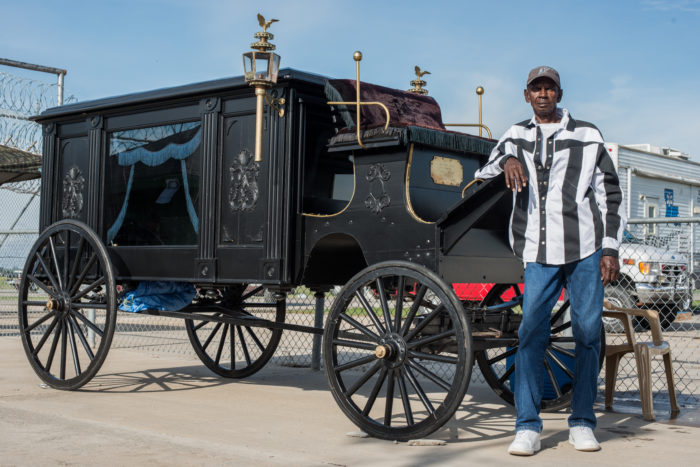
(Photo by Giles Clarke/Getty Images)
Those inmates are given a funeral service at the penitentiary hospital chapel, placed in inmate-built wooden caskets, and loaded in a wooden hearse by a band of their fellow inmates. A Percheron-led hearse followed by a procession of inmates carries the body to the burying ground, where a minister blesses the coffin, and commits the inmate to the earth.
Subscribe Today
Get daily emails in your inbox
Angola’s two cemeteries sit on a pair of grass fields on the outskirts of the prison. A tall arch set atop two pedestals bears the word “CEMETERY” in hand-carved letters.
At the front of the old cemetery is a slanted stone with a poem engraved in its face. It stands before a field of white crosses. It remembers the men who, according to Corrections communications director Ken Pastorick, “have completed their sentence.”
Remember not my name nor my sins nor guilt nor shame; only that I was a man